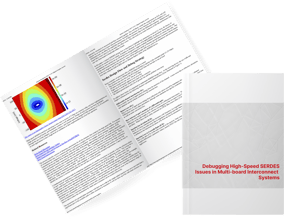





This Fidus whitepaper, awarded the Outstanding Paper Award at EDI CON USA 2017, delves into the complexities of high-speed SERDES (Serializer/Deserializer) interfaces, particularly focusing on their implementation on single printed circuit boards and backplane systems. With data rates exceeding 5 Gbps, these interfaces have become commonplace, but ensuring error-free operation remains a challenge.
This paper explores the design process, emphasizing the importance of understanding parameters like s-parameters, insertion loss, return loss, skew, and insertion loss deviation. It also addresses the impact of ground plane resonance and skew between differential pairs on link performance.
Why Download This White Paper?
This whitepaper offers valuable perspectives on optimizing SERDES interfaces, highlighting the critical role of meticulous design, simulation, and testing processes. By understanding the complexities discussed herein, engineers and designers can enhance the reliability and performance of high-speed communication systems.
Download this whitepaper to unlock essential insights for optimizing SERDES interfaces and ensuring robust high-speed data transmission in your designs.